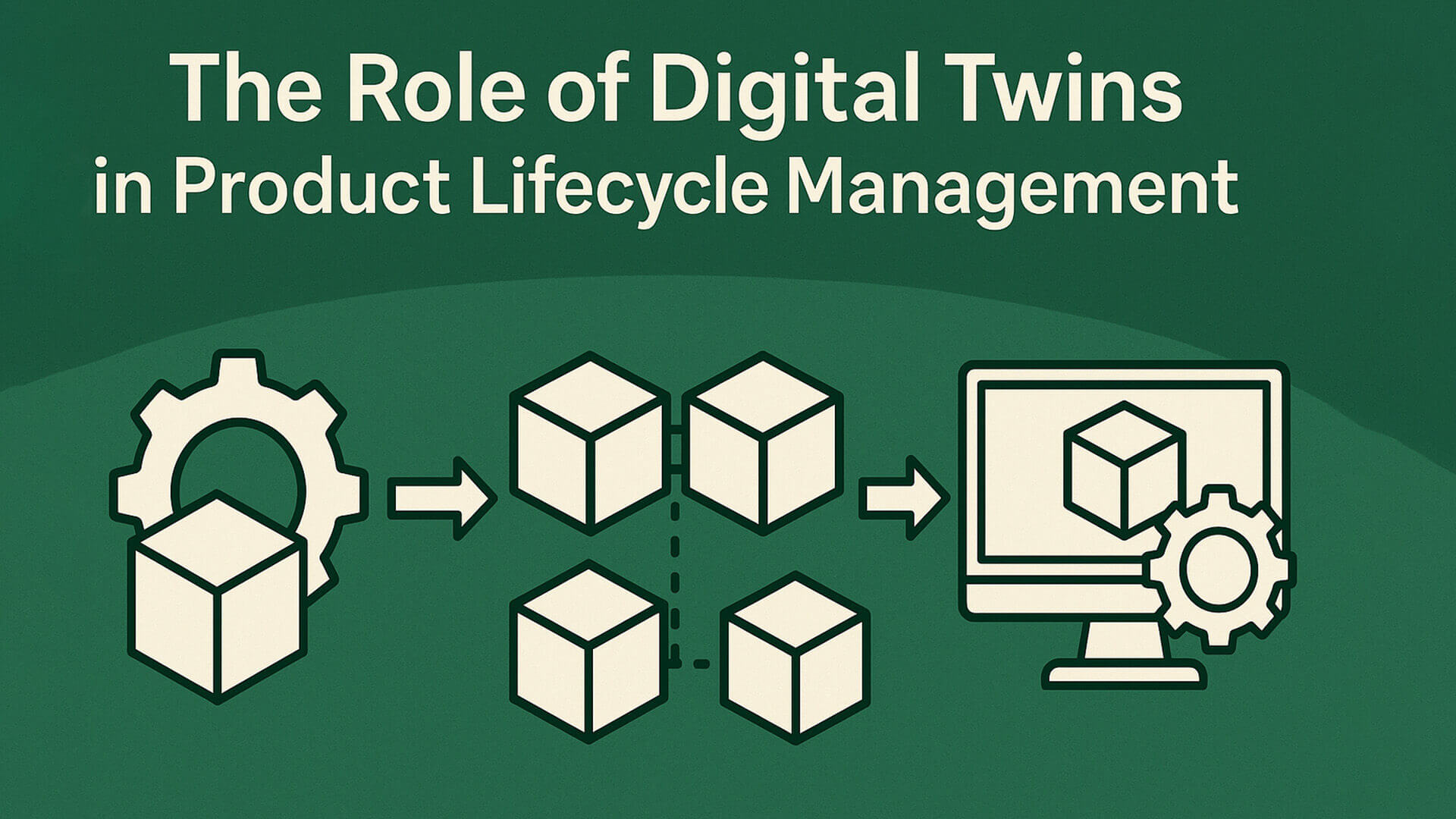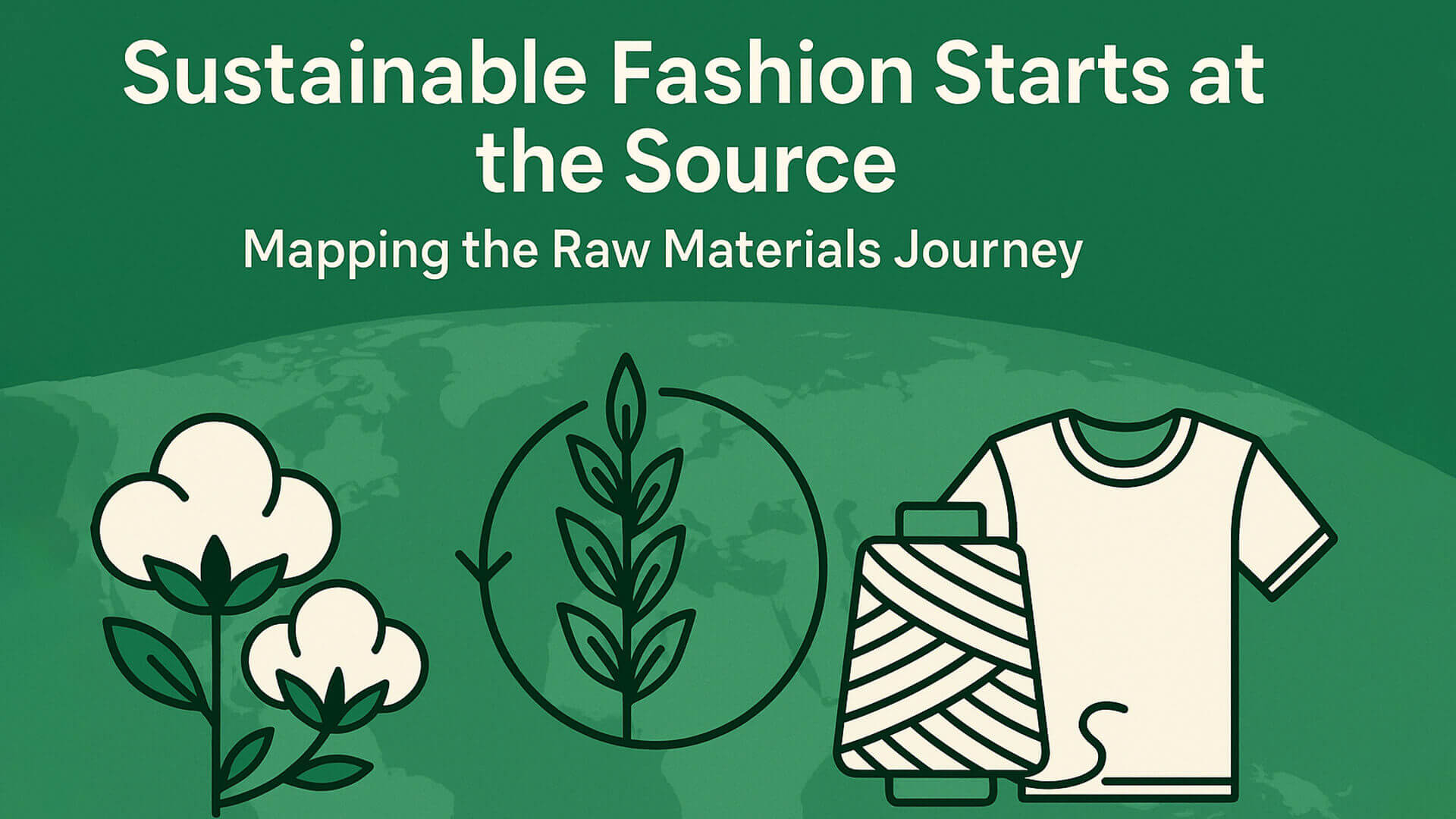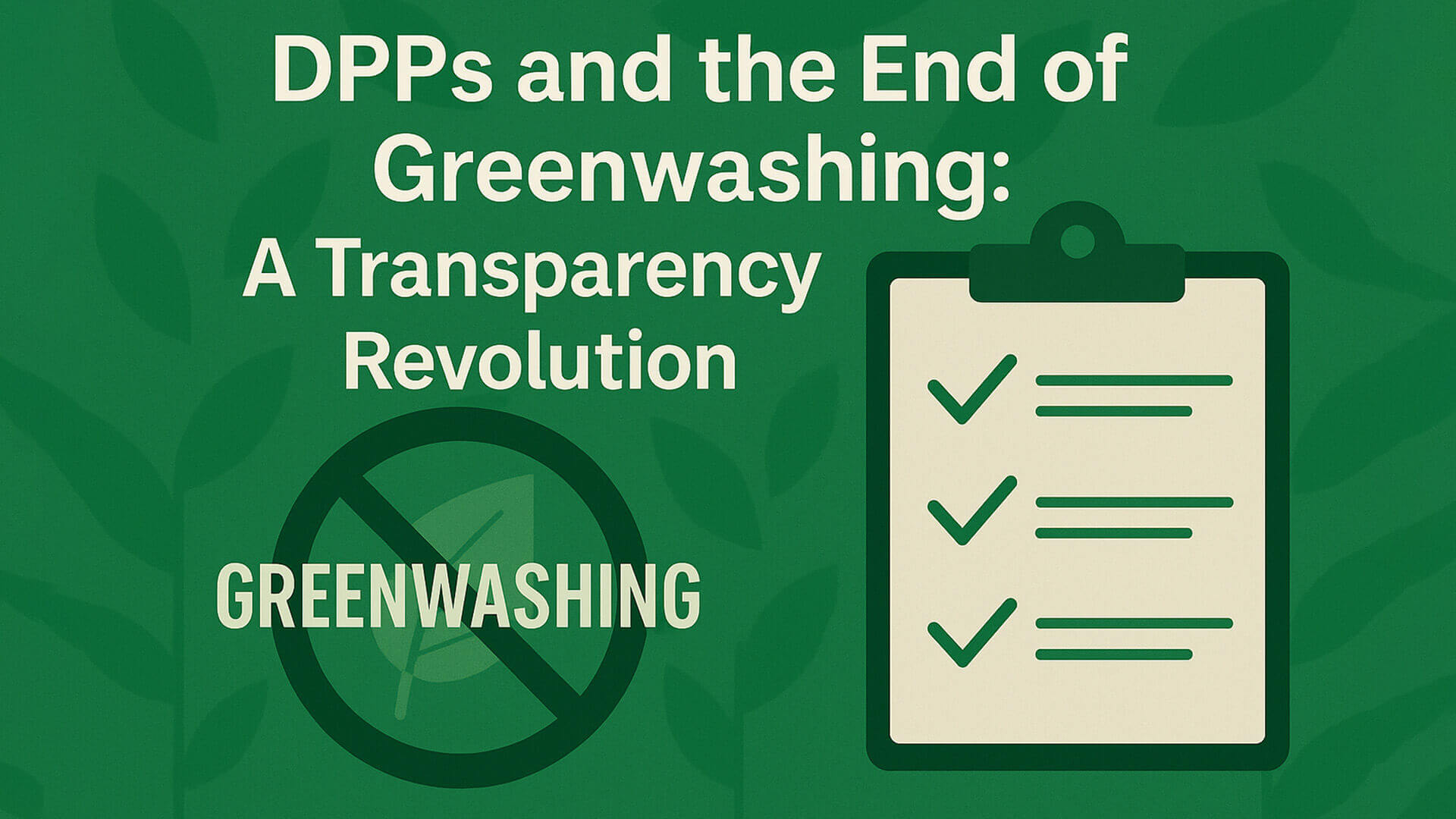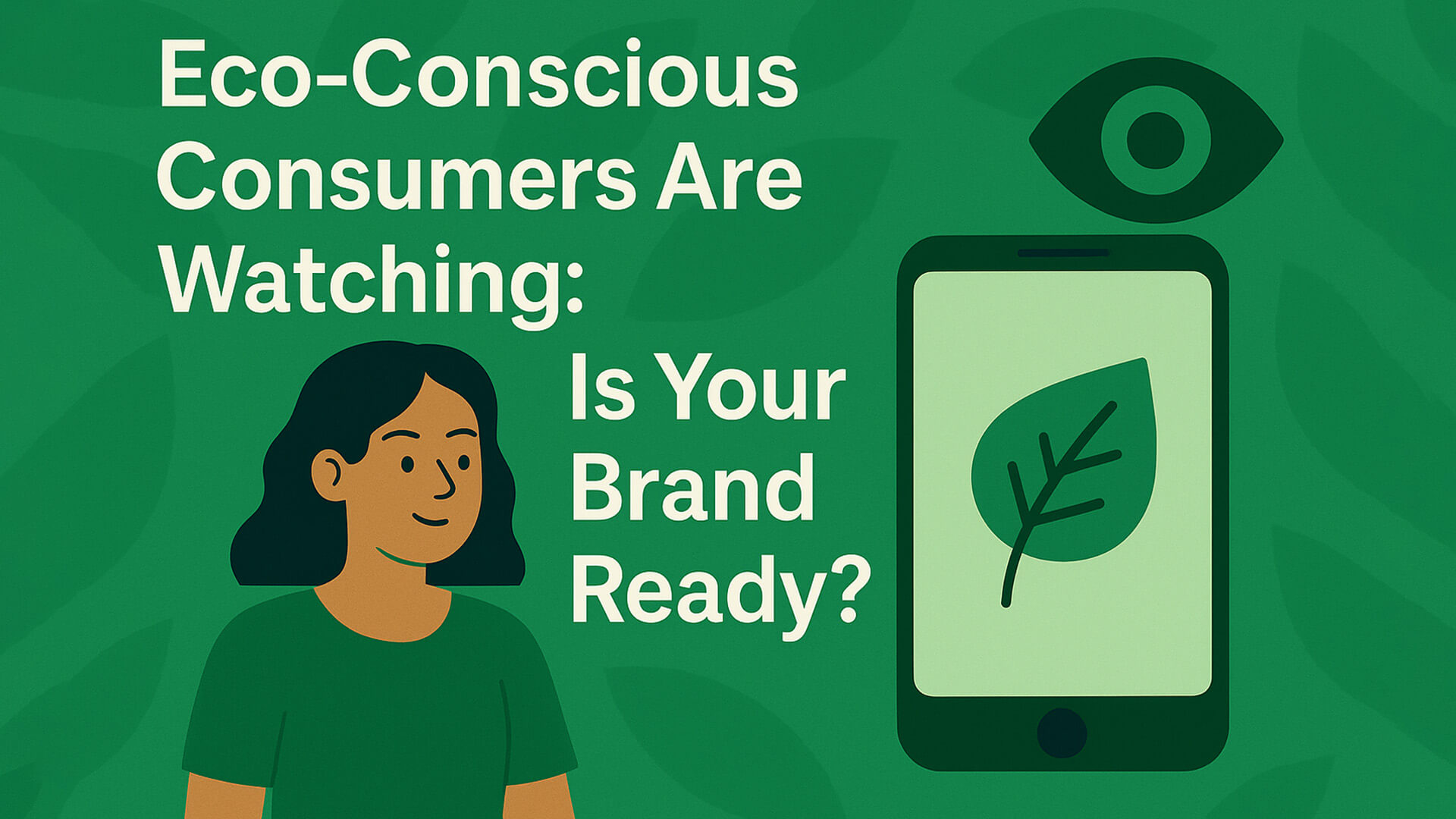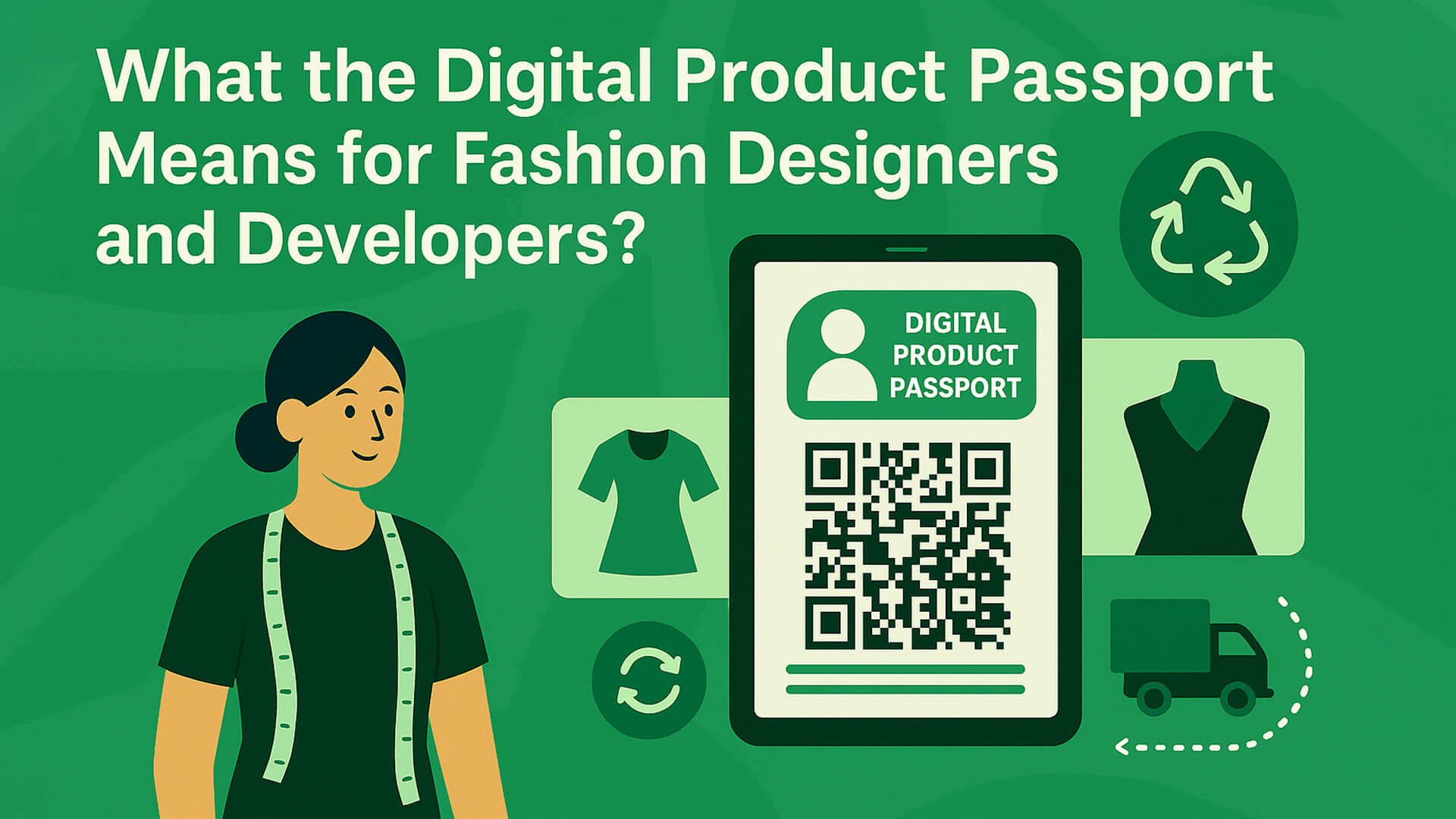- info@greenthreadsdpp.com
- Southampton, United Kingdom
Using Blockchain for Verified Apparel Supply Chains
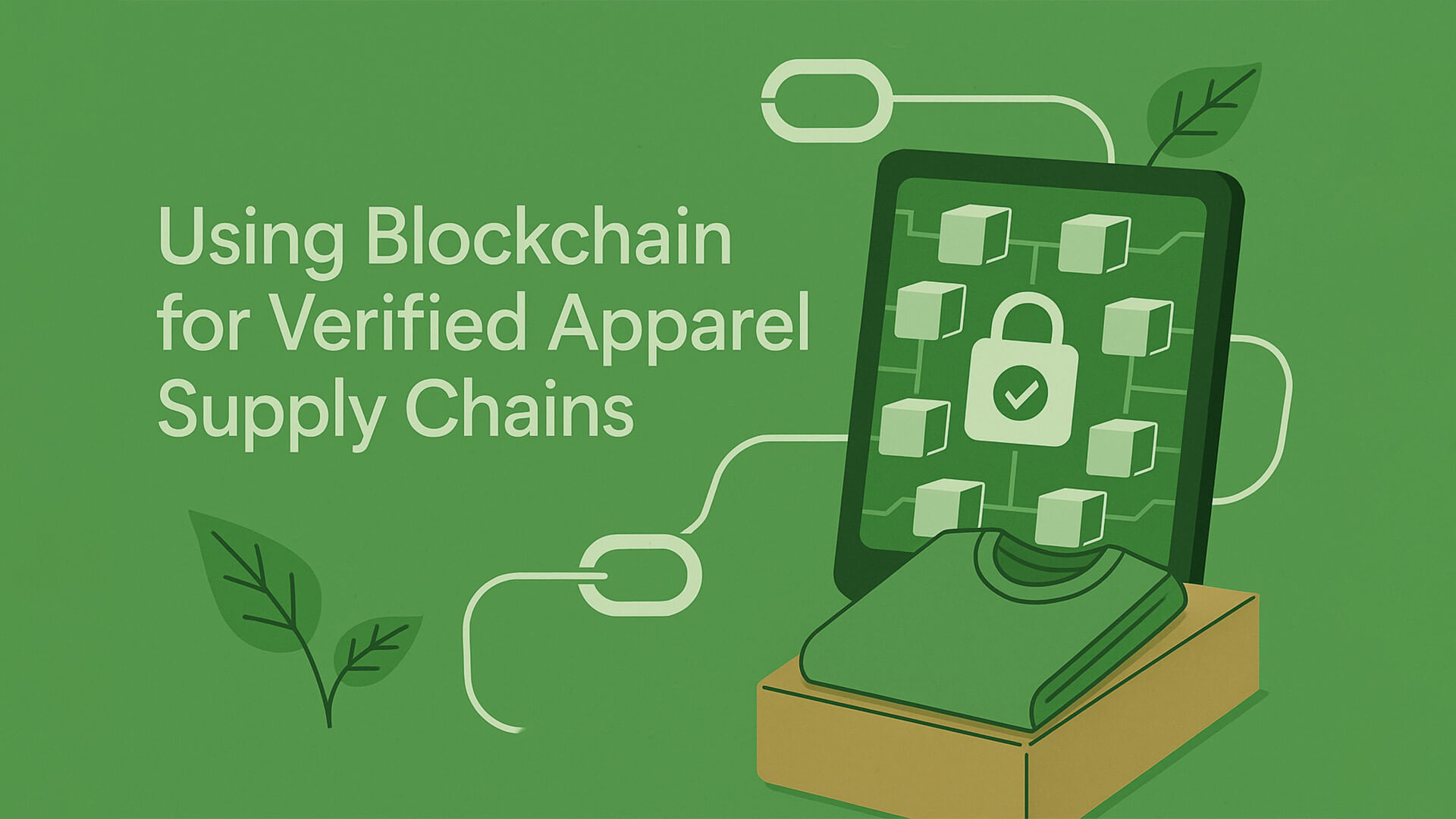
Introduction: Why Verification Matters in Fashion
The fashion industry has always been driven by creativity, culture, and global trade, but beneath its glamour lies a complex, fragmented supply chain that often hides unsustainable and unethical practices. From cotton farms and dye houses to factories and freight, each stage of garment production involves numerous players, often spread across continents. And with that complexity comes risk: unauthorised subcontracting, false certification claims, greenwashing, and labour violations can all slip through the cracks.
In today’s market, verification is no longer a “nice to have” rather it’s a business imperative. Consumers, regulators, and investors are demanding real proof of a product’s origin, impact, and ethical standards. According to the Fashion Transparency Index 2023 by Fashion Revolution, over 75% of consumers believe brands should share detailed supply chain information, yet only 12% of major brands disclose supplier data at the raw material level.
Without verification, sustainability claims lack credibility. Ethical sourcing becomes unverifiable and brands risk losing trust, facing reputational damage, or even falling foul of new regulatory requirements such as the EU Digital Product Passport and Corporate Sustainability Due Diligence Directive (CSDDD).
In 2020, fast-fashion retailer Boohoo faced severe backlash when reports revealed poor working conditions and underpaid labour in its UK supplier factories. The brand’s public reputation and market value plummeted, not because it lacked sustainability messaging, but because it lacked verifiable oversight of its supply chain.
Forward-thinking brands are realising that trust can’t be earned with claims alone. Today’s consumers are asking for proof and most believe that “if you can’t trace it, you can’t trust it.” As a result, verification has become essential, not optional. It’s now a critical part of building brand resilience, securing customer loyalty, and staying compliant with the fast-evolving demands of modern, responsible fashion.
What is Blockchain and why is it Relevant to Fashion?
Blockchain is a type of digital ledger technology that allows information to be securely recorded, shared, and verified across a decentralised network. Unlike traditional databases that are controlled by a single entity, blockchain records are spread across many computers, making them nearly impossible to alter, hack, or delete without broad agreement. Each piece of information or "block" is time-stamped, linked to the one before it, and permanently stored once verified. This creates a chain of trust.
So why does this matter in fashion?
The fashion supply chain is vast, fast-moving, and often opaque. A single garment may pass through dozens of hands across multiple countries before reaching the customer. As a result, tracking where a product comes from, how it was made, and whether it meets ethical or environmental standards can be extremely difficult.
Blockchain changes by creating a secure, traceable digital history of a product, from raw materials to the shop floor and even beyond. Each transaction or movement can be recorded on the blockchain by relevant parties (e.g. cotton farmer, textile mill, factory, distributor). These records can’t be changed later, which means that brands, suppliers, and consumers can trust the data they’re seeing.
This is particularly relevant today as the fashion industry faces pressure from all sides:
-
Consumers want proof of sustainability
-
Governments are introducing stricter transparency laws
-
Investors expect ESG accountability
-
Counterfeiting and greenwashing are widespread
Blockchain provides a powerful foundation for verifying claims, improving compliance, and building consumer trust, all while enabling more responsible, circular business models.
In short, blockchain isn’t just a tech buzzword. It’s a practical solution to one of fashion’s biggest problems: knowing and proving the truth behind every garment.
How Blockchain Works in Apparel Supply Chains
Blockchain transforms how apparel supply chains are tracked, verified, and shared, replacing trust in people or paperwork with trust in secure, decentralised technology. In a typical fashion supply chain, dozens of suppliers, factories, logistics firms, and brands handle each garment. With so many moving parts, data can easily become fragmented, outdated, or manipulated.
Blockchain solves this by creating a shared digital ledger where each transaction or activity is recorded in real time, verified by multiple parties, and stored immutably (meaning it can’t be changed or deleted). Everyone involved in the supply chain can contribute and view entries, but no one can tamper with them without consensus.
Here’s how it works step by step:
Raw Material Registration
The journey begins at the source. A cotton farm, for example, logs details about the crop’s origin, growing practices, and certifications (e.g. organic status). This information becomes the first block in the chain.
Processing and Manufacturing
As the raw cotton moves to a spinning mill, the facility adds a new block with information about the transformation (e.g. when it was spun, by whom, and under what conditions). The same happens at each stage, dyeing, weaving, cutting, and stitching with each contributor adding verified data.
Logistics and Distribution
Transport companies update the blockchain with shipping data: where the goods are going, how they’re handled, and when they arrive. This creates a transparent chain of custody.
Retail and Product Labelling
When the finished garments reach retailers, each one can be linked to a digital identity, accessed by scanning a QR code, NFC tag, or unique digital product passport. This allows consumers to trace the garment’s full history instantly.
Post-Purchase and Circularity
Even after the sale, the blockchain remains useful. Brands can use it to support resale authentication, repairs, rental, and recycling by recording wear, care, and ownership changes. This turns fashion into a living, trackable system.
Blockchain doesn’t replace the supply chain, it strengthens it. It ensures that data is accurate, trusted, and visible, even in global operations with many layers. This level of verification empowers brands to back up their sustainability claims, engage ethically with consumers, and prepare for legislation like the EU Digital Product Passport.
By embedding blockchain at the heart of the apparel supply chain, fashion businesses move from vague promises to provable responsibility.
Benefits of Blockchain for Fashion Brands
Blockchain is more than a digital buzzword, it’s a transformative tool that helps fashion brands respond to the growing demand for transparency, traceability, and trust. By using blockchain technology to record and share supply chain data, brands can not only improve internal efficiency but also strengthen relationships with customers, suppliers, and regulators.
Here are the key benefits:
Supply Chain Transparency
Every step in the supply chain, from fibre to finished product can be tracked in a secure, tamper-proof ledger. This enables brands to show exactly where their materials come from, how items are produced, and under what social and environmental conditions. It's a game-changer for ethical storytelling.
Anti-Counterfeiting and Product Authentication
Blockchain assigns a unique digital identity to each garment, which can be verified at any point in its lifecycle. This helps prevent counterfeiting, especially in high-end fashion and streetwear markets where fakes are common. Consumers and resellers can confirm authenticity instantly via QR codes or NFC chips.
Regulatory Compliance
As governments introduce stricter rules around product traceability (e.g. EU ESPR, CSDDD), blockchain simplifies reporting by securely storing data required for compliance. It can help automate submissions, ensure audit readiness, and reduce the burden of manual documentation.
Improved Consumer Trust and Loyalty
Today’s shoppers want more than a label; they want a story. Blockchain enables brands to offer that story in a verified, engaging format. Customers can scan a product and view its journey, ethical credentials, and care instructions, which boost confidence and repeat purchases.
Enabling the Circular Economy
Blockchain provides a digital record of a product’s ownership, condition, and care history. This supports buy-back schemes, second-hand resale, and textile recycling, essential components of circular business models. Garments become traceable not just through their first life, but through many.
In short, blockchain gives fashion brands the tools to not only prove their values, but also to unlock new business opportunities, customer relationships, and long-term brand value.
Case Studies: Blockchain in Action
Several pioneering fashion companies and tech partners are already using blockchain to bring radical transparency and innovation to the apparel industry. Here are some standout examples:
Martine Jarlgaard x Provenance
One of the first designers to use blockchain for full traceability, Martine Jarlgaard worked with Provenance to record her garments’ journey from alpaca farms in the UK to the production studio. Each piece featured a QR code that allowed buyers to access its full digital trail, showing who made it, where, and how sustainable.
Adidas x VeChain
Adidas explored using blockchain via VeChain to track the authenticity and lifecycle of its limited-edition sneakers. Each pair came with a unique NFC chip that verified ownership and prevented counterfeiting, especially important in the resale market where fake merchandise is rampant.
H&M Group x TextileGenesis
To improve fibre traceability, H&M partnered with blockchain platform TextileGenesis. They used it to track and verify sustainable materials like organic cotton and recycled polyester. Every shipment was digitally tagged, giving H&M clear visibility over where its textiles were sourced and processed.
Arianee x Breitling (Fashion/Luxury crossover)
While known in the luxury watch industry, Arianee's blockchain certificates are being adopted by fashion brands for digital twins, unique, transferable digital identities for physical products. These allow consumers to claim ownership, access exclusive services, and verify authenticity for resale or rental.
Eon x Chloé
Luxury brand Chloé partnered with Eon to implement digital IDs on garments, backed by blockchain. Each product includes a digital profile showing its lifecycle impact, care instructions, and resale eligibility, giving consumers ownership over their item’s sustainability journey.
These examples show that blockchain is already being applied across different segments of the industry, from indie designers and streetwear giants to high-end luxury labels.
The one thing these brands share? A dedication to showing real evidence, not just making bold claims.
Challenges and Limitations
While blockchain has the potential to bring radical transparency and integrity to the fashion industry, its adoption comes with real-world challenges that brands must plan for thoughtfully. These limitations are not deal-breakers, but they do require strategy, investment, and education.
Data Accuracy Depends on Human Input
Blockchain guarantees that data cannot be changed once it’s recorded, but it cannot verify whether that data was correct to begin with. If a supplier inputs false or incomplete information, the blockchain will preserve that mistake permanently. Brands must therefore invest in proper training, checks, and digital verification tools at every supply chain node.
Technological Integration is Complex
Many fashion companies, especially those with older systems or fragmented supplier networks may find it difficult to integrate blockchain into existing operations. Adoption requires updates to IT systems, retraining staff, and ensuring compatibility with other platforms like PLMs and ERPs.
Participation from all Stakeholders is Crucial
Blockchain works best when all parties in the supply chain participate, from raw material producers to recyclers. Small suppliers may lack the tools, knowledge, or internet access to contribute effectively, creating blind spots in an otherwise transparent system.
Cost Can Be a Barrier
The initial cost of blockchain implementation, especially for pilot projects and early adoption can be high. Small brands may need industry-backed solutions or shared infrastructure to make it feasible.
Lack of Industry Standards
At present, there is no universally accepted blockchain standard for fashion. Different platforms capture and store different types of data, making it hard to collaborate or share information across brands and systems. Regulatory frameworks like the EU Digital Product Passport may help unify these efforts.
Energy Consumption and Environmental Impact
Although many newer blockchain systems are energy-efficient, some earlier models have been criticised for high energy use. Brands committed to sustainability must choose the right blockchain protocol, such as those using proof-of-stake to align with their environmental values.
Privacy and Data Ownership Concerns
Blockchain’s permanence raises legal and ethical questions about who owns the data, especially when consumer or third-party information is recorded. Brands must navigate privacy laws like GDPR and create transparent policies for how blockchain data is handled.
While these hurdles exist, they’re also shrinking. As technology improves, costs decrease, and standards emerge, blockchain will become increasingly practical and scalable, especially when brands start small and build up from trusted use cases.
The Future: Blockchain as the Backbone of Trust
In the next decade, blockchain is poised to become the trust layer of the fashion industry, a digital backbone supporting transparency, ethical sourcing, and circularity at scale. As legislation tightens and consumers grow more sceptical of unverified claims, fashion brands will need more than storytelling. They’ll need systems that can prove every promise.
Blockchain will power Digital Product Passports, helping brands meet EU requirements by offering permanent, verifiable records of origin, materials, and environmental impact. It will also support digital twins, giving each product a traceable digital identity that updates throughout its lifecycle. This means every garment can be authenticated, reused, repaired, resold and tracked beyond its first life.
As blockchain matures, we can expect:
-
Wider integration with AI and PLM platforms for predictive design, stock optimisation, and automated compliance
-
Smart contracts that automate payments, certifications, or rewards once conditions are met (e.g. verified organic cotton)
-
Decentralised platforms where consumers and brands co-manage product data, sustainability scores, and resale value
-
Global standardisation, making blockchain easier to scale across brands, retailers, and governments
In this future, trust is no longer built on words, it’s built on code. The brands that succeed will be those that embrace verifiable systems, open collaboration, and digital innovation.
Because fashion isn’t just about looking good anymore, it’s about doing good, and proving it.
Conclusion: Is Your Supply Chain Blockchain-Ready?
The fashion industry is undergoing a transformation. No longer can brands rely on vague promises or partial disclosures, consumers, regulators, and investors are now demanding proof. Blockchain offers a credible, scalable, and secure way to meet that demand by turning every stage of the supply chain into a transparent, traceable, and tamper-proof record.
From raw materials to recycling, blockchain helps brands verify claims, protect their reputation, and stay ahead of growing legal and ethical expectations. But adopting blockchain isn’t just about compliance, it’s about leading with integrity, building customer loyalty, and unlocking future-ready business models like resale, rental, and repair.
So, the question isn’t if your business should explore blockchain, it’s when.
Start by asking:
-
Can you confidently trace your materials to the source?
-
Do you have visibility over how your products are made and moved?
-
Are your sustainability claims backed by verifiable data?
-
Could your customers access this information with a simple scan?
If the answer is “not yet,” then now is the time to act.
At Green Threads DPP, we help fashion brands take the first steps or scale their efforts, with blockchain-ready systems designed for circularity, compliance, and consumer trust.
Be transparent.
Be verifiable.
Be ready for the future of fashion.
References
-
Fashion Transparency Index 2023 – Fashion Revolution. https://www.fashionrevolution.org. Annual report tracking brand transparency across global fashion supply chains.
-
EU Ecodesign for Sustainable Products Regulation (ESPR) – European Commission. https://environment.ec.europa.eu. Legislative proposal requiring Digital Product Passports for textiles and other sectors.
-
Corporate Sustainability Due Diligence Directive (CSDDD) – European Commission. https://ec.europa.eu/info/publications/proposal-corporate-sustainability-due-diligence_en. Directive requiring brands to identify and prevent human rights and environmental harm in their operations.
-
TextileGenesis™: Blockchain for Sustainable Textiles – TextileGenesis. https://www.textilegenesis.com. A blockchain platform used by brands like H&M and Lenzing to trace fibre origin.
-
Arianee Protocol – Arianee. https://www.arianee.org. Open-source blockchain platform for creating digital product passports in fashion and luxury.
-
Eon Group: Connected Products Platform. https://www.eongroup.co. Technology powering digital twins and blockchain-based IDs for brands like Chloé and Pangaia.
-
Provenance: Transparency Tech for Responsible Brands. https://www.provenance.org. Blockchain-based tools for verifying ethical and sustainability claims across fashion supply chains.
-
IBM Blockchain in Fashion Supply Chains. https://www.ibm.com/blockchain/industries/supply-chain. Case studies and technical whitepapers on blockchain implementation in fashion and retail.
-
World Economic Forum – Blockchain for Sustainable and Inclusive Value Chains. https://www.weforum.org. Analysis of how blockchain supports traceability and ESG goals in global supply chains.
10. Ellen MacArthur Foundation – Circular Business Models: Redefining Growth. https://ellenmacarthurfoundation.org. Guidance on how digital technologies, including blockchain, enable circular economy transitions.

